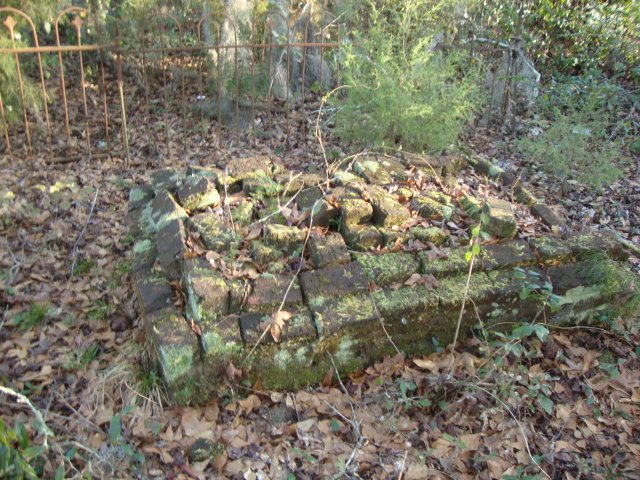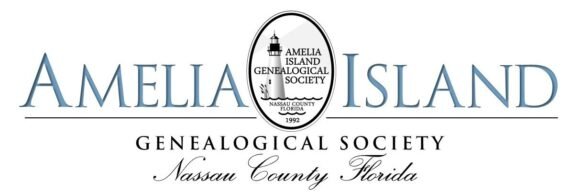Noah Samuel Albritton settled in Nassau County shortly after his marriage to Lucina Griffin and remained there for more than two decades. He first appeared in the 1846 tax roll for Nassau County alongside his brother, James Matthew Albritton. Their parents were Thomas Henry and Mary Ann (Strickland) Albritton, and their paternal grandparents were Rev. John and Averilla Albritton of Laurens County, Georgia.
Another son of Rev. John and Averilla, Rev. Matthew Albritton, was also a clergyman. While there is no evidence that he ever set foot in Nassau County, my research recently led me to him through his entry in Huxford’s Pioneers of Wiregrass, Georgia. While delving into his history, I came across an unexpected clue in a cemetery—an experience that was not unfamiliar to me.

The first time a cemetery provided a pivotal clue in my research was within my own direct Partridge lineage. A fellow researcher once sent me Polaroid photographs of the Navestock Church graveyard in Essex County, England. At one time, the New England Genealogical and Historical Register had published the genealogy of brothers William and John Partridge (from whom I descend on both sides), suggesting their possible English parentage: John Partridge and Jane Hogg. The Visitation of Essex in 1634 recorded this family, listing children John, William, and Margaret. The two Medfield brothers had a sister, Margery, who accompanied her brothers to America around 1654.
A letter sent to the vicar of Navestock Parish yielded a response confirming that a William Partridge was born around 1622 and Margaret around 1628—dates aligning with the known birth years of this family. The researcher concluded, “These coincidences, while they prove nothing, should, it seems to the writer, be given consideration in clearing up the mystery of the English origin of the Medfield Partridges.” What followed was a rush of family historians declaring the connection as fact, rather than theory.
That brings me back to the old Polaroid photograph. During World War II, the Navestock churchyard suffered a direct hit during the bombing of the London area, destroying many graves. However, the church itself remained intact, and within its walls were the burial sites of the more prominent members of the community. One grave inscription read:
“John Partridge, gent., dyed 24 Mar 1653 at age 34.”

This was the John, son of John and Jane Hogg, listed in the Visitation of Essex, and further research confirmed that his brother William had died just two years after the visitation. The discovery of John Partridge’s will, which named his wife as Jane, ultimately solidified the connection. This experience reinforced an important lesson: even widely accepted research should be verified. Take nothing for granted.
A second graveside revelation came in my research of my wife’s ancestry. As confident as I sometimes am in my genealogical skills, I found myself stymied by a brick wall surrounding her grandfather, Orville Service. We knew who he was, and his Social Security application listed his parents as William Service and Edna May Hall. Edna was easy to trace, but William Service appeared nowhere in the records. We began to suspect that “Service” was a misspelling of “Serviss.”
The first census in which Orville appears is the 1930 census, where he is listed as 13 years old and living with his maternal grandparents, Henry and Henrietta Hall. Determined to push past the roadblock, I focused on Edna’s family and turned to FindAGrave to search for her father, Henry Hall. What I discovered was unexpected. Henry and his wife, Henrietta, shared a gravestone—with Edna’s name inscribed as well:
“Edna May Hall-Cerbus.”
For the first time, I had a surname that seemed to fit. However, no record of a William Cerbus emerged that matched the known details. The ultimate breakthrough didn’t come from traditional genealogy but from an unexpected source—an FBI file. That, however, is another story entirely. The key point is that a single gravestone photograph on FindAGrave provided the crucial clue that led to the truth. Using the information I have extended my wife’s ancestry back several generations further back into Slovakia where the name takes on yet another spelling, Czirbusz.
Most recently, I encountered another such discovery while researching the Rev. Matthew Albritton mentioned earlier. The photograph in question, also found on FindAGrave, depicts a section of the cemetery on the former property of John Wesley Allen in Quitman, Georgia. Like many family cemeteries, this graveyard is small, enclosed by a rusted wrought-iron fence. Among the burials is Nancy Ann, Rev. Matthew Albritton’s wife, along with their daughter, Martha Ellen Allen, who was married to John Wesley Allen.

Only four “known” burials are listed for this cemetery, with Martha’s being the only one that has an existing headstone. However, what immediately captured my attention in the above image was a stacked pile of bricks positioned in front of Martha’s grave.
The significance of those bricks became clear when I revisited the details in Huxford’s Pioneers of Wiregrass, Georgia (1951) and History of Brooks County, Georgia (1947). Both sources state:
“He was buried at Bethany Church; his grave was marked by a brick wall about it but has no other marker.”
The Bethany Church cemetery, now called Arabia Cemetery, is located in Clinch County, Georgia. Today, there are no brick walls remaining there. Here, then, was a compelling coincidence: a missing brick wall at Bethany, supposedly surrounding Rev. Matthew Albritton’s grave, and a pile of bricks in the Quitman cemetery where his wife was buried more than twenty years later.
Much like the early theories on the Partridge brothers’ origins, I do not claim this as fact—only a significant coincidence that warrants further research. However, I strongly suspect that Rev. Matthew Albritton’s body, along with the bricks that once enclosed his grave, was reinterred at the John Wesley Allen family cemetery, likely after his wife’s passing.
Cemeteries often hold more than memories—they hold mysteries waiting to be uncovered. Go visit one today. Either in person, or virtually. What clues will you unearth?
- Nassau County Cemeteries – Amelia Island Genealogical Society Cemetery Database
- FindAGrave
